Easter - the most important holiday for Christians. It is customary to meet with family, close to loved ones and loving people. On Bright Sunday the table is laid and decorated with various Easter decorations. Let's see what the menu of the Easter table, traditional dishes and recipes for their preparation can be. 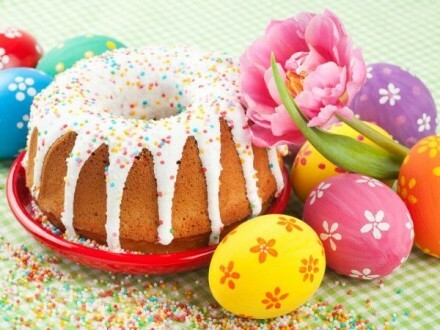
Traditional dishes
Easter cake, Easter curd and dyed eggs, which are sacred in the church and served to the festive Easter table, are the main attributes of Easter.
The cake can be made from various products, for example, from cottage cheese, oatmeal, plain wheat and even from pumpkin. Easter cake is not just a traditional pastry. He has a sacred meaning and symbolizes Jesus Christ, who after his resurrection ate food with the apostles.
Dyed eggs( chicken, goose or duck) are also important. As a rule, symbols with different meanings are put on them. For example, among such symbols there are: a cross, a spiral, rhombuses and squares, plant and animal ornaments.
There are several types of Easter eggs:
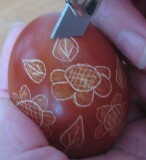 Drapanka
Drapanka 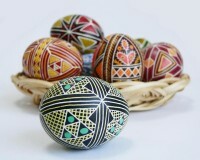 Pisanki
Pisanki - Pisanki. Patterns on the surface of the shell are applied by hot wax and a special tool( pencil).
- Drapanki. Drawing patterns and patterns is done with the help of scratching with a sharp object.
- Caps. On the surface of the shell hot wax is applied patterns: stripes, dots, etc.
- .Painted eggs in one color.
- Malevanki. On the Easter eggs, various drawings are made, which have no symbolic meaning( landscape, people, plot pictures, etc.).
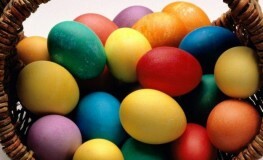 Краднки
Краднки 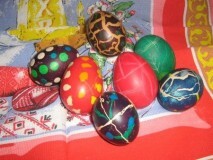 Крапанки
Крапанки 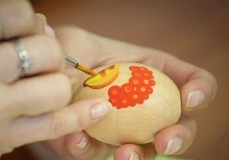 Malevanki
Malevanki
Easter cake
This is a traditional recipe for making an Easter cake, which was used even in the times of Rus. Make baking on yeast from wheat flour of the highest grade.
Ingredients:
- 1,25 L of milk;
- 2 tbsp.l.dry yeast;
- 2 kg of flour;
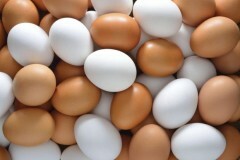 Eggs
Eggs 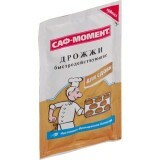 Yeast dry
Yeast dry 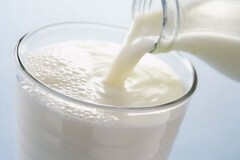 Milk
Milk
- 500 g of granulated sugar;
- 10 eggs;
- 2 tsp.salts;
- 500 g melted butter;
- vanillin, cardamom, cinnamon.
Preparation:
- To prepare the gum, heat to a warm state with 750 ml of milk. We dissolve yeast in it and wait 15 minutes.
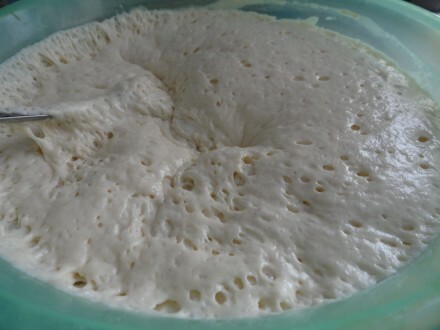
- Sift flour through a fine strainer to make the baking volumetric and delicate. We take 1 kg of flour and pour it into a deep bowl. To her, add the yeast mass and mix.
- We enclose the resulting towel with a towel and put it in a warm place to make the dough come up.
- Proteins of chicken eggs are separated from yolks. The latter is ground with fine granulated sugar until white.
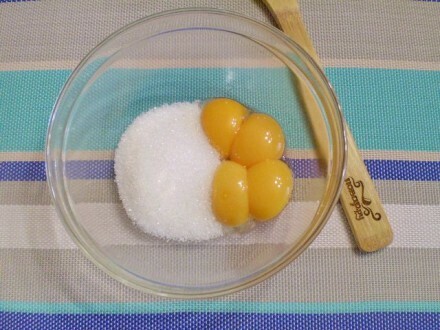
- After the opara has increased in 2 times, we add whipped egg yolks to it. Then we put vanillin, cardamom and cinnamon into the dough.
- Melt butter and pour it into the dough. Then add to it the remaining warm milk and sifted flour. Now you can start the process of kneading the dough. However, if it turns out to be liquid, add more flour to it, first sifting it.
- We put the dough in a warm place for 1-1,5 hours.
- After the dough has approached, spread it in oiled( if necessary) molds, filling them with no more than half.
- Forms put in a warm place to the dough came up again. Then you can send Easter cakes to the oven.
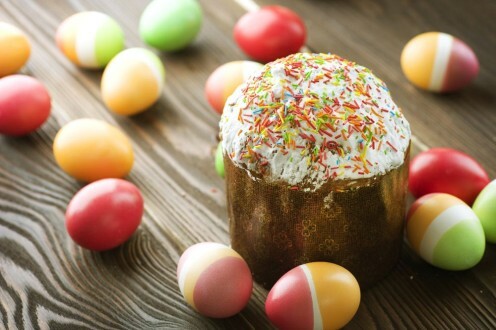
Curd Easter
This is an incredibly delicious, delicate and airy delicacy, which is traditionally prepared for the Easter table. To prepare it, take some free time and effort. However, the result will be worth it.
Ingredients:
- 1 kg 9% curds;
- 200 g butter butter;
- 200 g granulated sugar
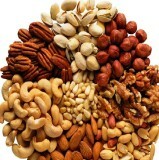 Nuts
Nuts 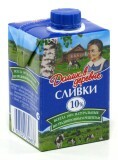 Cream 10%
Cream 10% 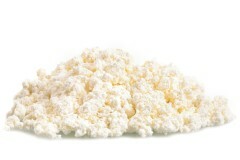 Curd
Curd
- 5 fresh chicken eggs
- 400 ml 10% cream;
- 100 g of any nuts( walnuts, cashews, etc.);
- 100 g of candied fruits;
- 100 g raisins;
- 1 tsp.vanilla sugar.
Preparation:
- Cottage cheese is carefully wiped through a fine strainer or passed several times through a meat grinder until a uniform and thick curd mass is formed.
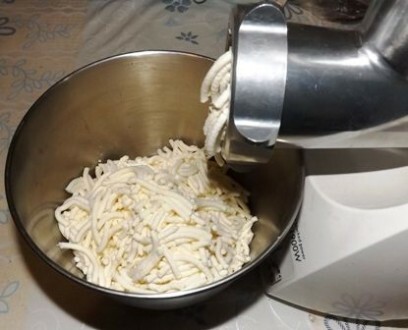
- Butter butter is preliminarily put in a warm place, so that it becomes soft. Then it is added to the ground cottage cheese and mixed until smooth.
- In a hotel kitchen, whisk the eggs with a mixer or whisk, gradually adding to them sugar sand in the process.
- To whipped eggs add cream, vanilla sugar and mix.
- The resulting creamy-egg mixture is placed on a slow fire and, stirring constantly, bring to a boil. Do not stop stirring, you should cook this mass until it thickens( about 5 minutes).Then it is removed from the fire and cooled.
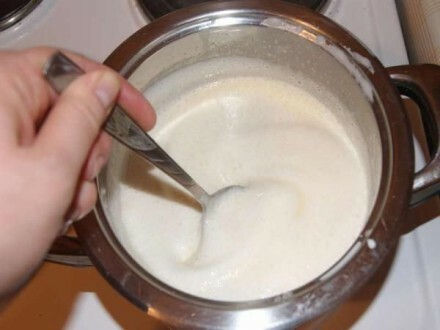
- Finely chop nuts, soak raisins in warm water and grind candied fruits( if they are large enough).All these products are well washed, dried and added to ground cottage cheese.
- Then in the curd pour the egg-cream mixture and mix.
- Prepare a form for Easter, wash it and dry it, and then cover with gauze, folded in 2 layers. At the same time, the edges of the gauze should hang freely from the mold.
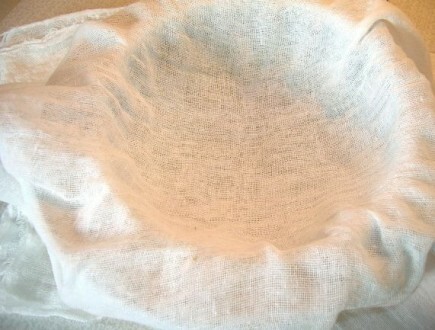
- Cottage cheese mass with candied fruits and nuts is laid out in the form and the edges of the gauze are wrapped. The form should be put in a bowl, as the serum will drain from it.
- On top of the mold with curd mass put the load( you can use a water-filled bottle), and then put it for 12 hours in the refrigerator.
- After the above-mentioned time, the cargo is removed, the edges of the gauze are straightened, the shape is turned over and the curd easter is carefully pulled out onto the dish.
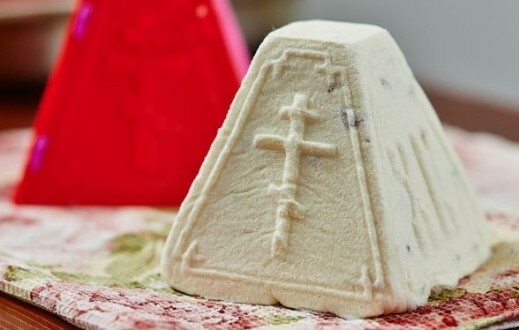
- Prepared Easter can be decorated with nuts, sweets, candied fruits, etc.
Easter eggs
Today, there are a large number of recipes for preparing Easter eggs. They can simply be painted with food or natural dyes, decorated with elegant painting or various decorative elements.
Let's look at several ways to prepare Easter eggs:
- Staining eggs in the onion husks is one of the traditional ways of preparing them for Easter. To do this, make a decoction of onion husks in the water, and then for a few minutes lower the eggs into it and boil it.
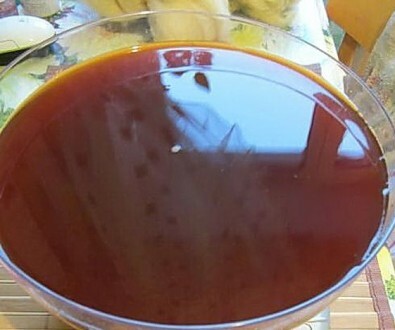
- Easter eggs with a floral pattern. For this, it is necessary to take leaves of plants or flowers, attach them to the eggshell, which then must be wrapped in gauze and lowered for several minutes in the coloring material, for example, in a food color or in a decoction of onion husk. After the paint has completely dried, you can remove the gauze.
- The usual boiled egg can be decorated with acrylic paints and a fine brush. On the shell, you can apply both drawings and symbolic patterns.
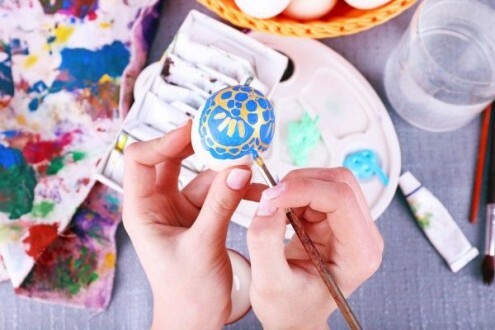
- Scratching patterns. To do this, you must first paint the egg in any one color, and then using a normal needle or an awl to scratch the shell on the shell.
- Eggs that are used as a gift or a souvenir can be decorated with beads, dried flowers, sparkles, etc.
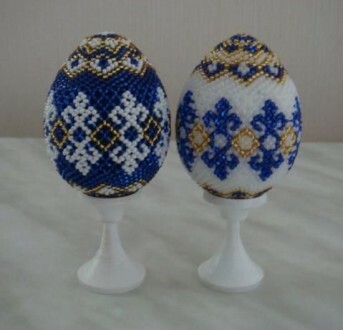
You can pick up a beautiful dish for Easter eggs so that they presentable and attractive look on the festive table. At its center, put a church candle or a willow twig. Sometimes sprouted wheat is planted in the center, which is a symbol of a new life.
Traditionally, 12 dyed eggs are placed on the dish, each of which symbolizes the apostle. In addition, they add one unpainted testicle, which will symbolize Jesus Christ. A colored consecrated egg should be first tasted for breakfast in the morning of the Bright Sunday.
Easter table
In 2017, the Orthodox Easter falls on the 1st of May. This religious holiday is preceded by a forty-day Easter post, which helps to cleanse not only the body, but also the soul. In this period there are many restrictions in food. Therefore, after the fast for Easter, you should not submit fatty and heavy dishes for the stomach, since they can negatively affect the health and health of the person who observed fasting. 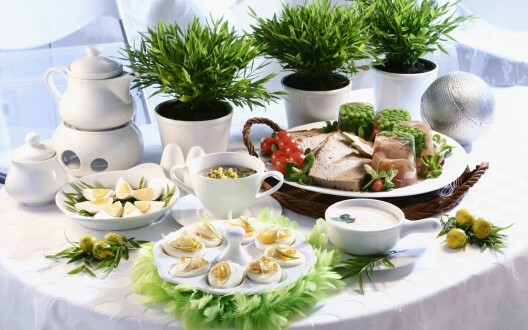
Dishes for Easter, which are served at the festive table, should be light. They can be made from fruits and vegetables, low-fat fish and meat. Dishes are decorated with green onions, dill and parsley. Since Easter symbolizes the end of fasting, dishes must be varied.
Prepare for Easter should be done in advance. Before this day, they choose recipes for dishes, carefully think through the festive table, bake cakes and paint eggs. Below we will consider the recipes for cooking the most interesting dishes.
For the Easter table you can serve the following dishes:
- Pour or fried piglet. Pork smoked or fried ham.
- Veal with garnish of vegetables.
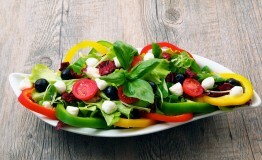 Salad
Salad 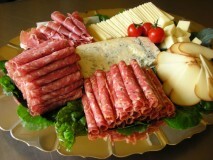 Cheeses and sausages
Cheeses and sausages 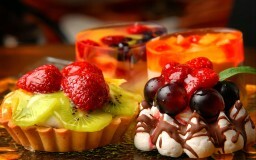 Sweet
Sweet
- Roll from a piglet.
- Cakes.
- Desserts and sweet dishes.
- Fish dishes.
- Salads.
- Snacks.
- Cheeses and sausages.
Although Orthodoxy does not approve of drinking alcoholic beverages, a small amount of red wine can be served to the festive table. 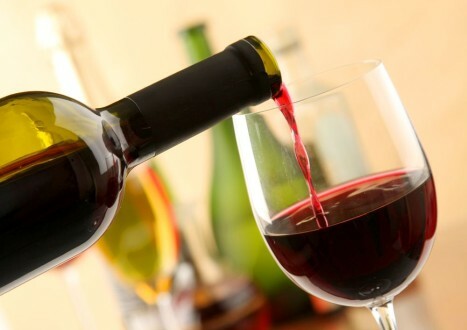
Piglet from the pig
This is an ancient dish to the Easter table, which is prepared from meat and giblets of a young piglet.
Ingredients:
- poultry young pig;
- 2-3 bulbs;
- 6 eggs;
- bun;
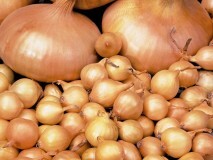 Onions
Onions 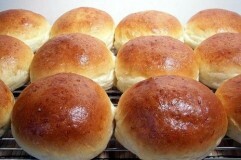 Buns
Buns 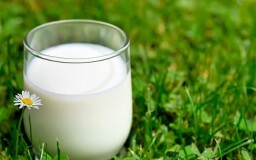 Milk
Milk
- 250 g of milk;
- salt and pepper to taste.
Preparation:
- The piglet is chopped, meat is removed, the giblets are removed, and then all is well washed.
- Meat and giblets are chopped in a meat grinder.
- Finely chop the onion and saute it on vegetable oil.
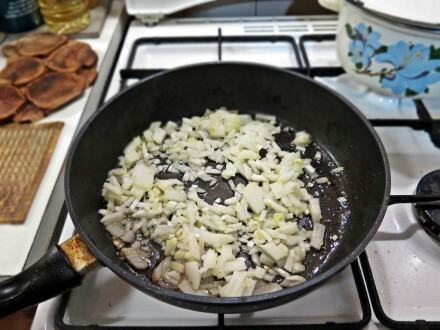
- To the onions add minced meat from meat and giblets. Good fry.
- Soften in a milk and beaten egg roll, and then add it to the stuffing.
- Boil hard-boiled eggs, then cool them and cut into slices.
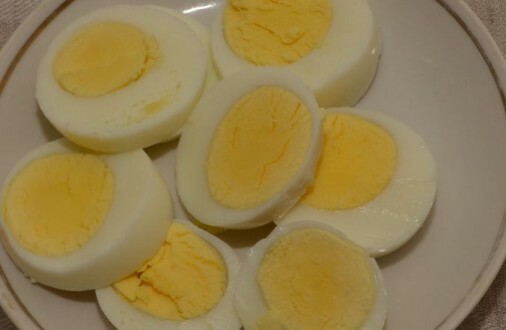
- Prepared minced meat is laid on the pig's skin, on top are put chopped eggs and folded into a roll. Tightly bandaged rolls with ropes.
- Meat broth or ordinary water, salt and pepper to taste, bring to a boil and put a roll in it, and then cook until ready.
- At night, the boiled roll is put under pressure.
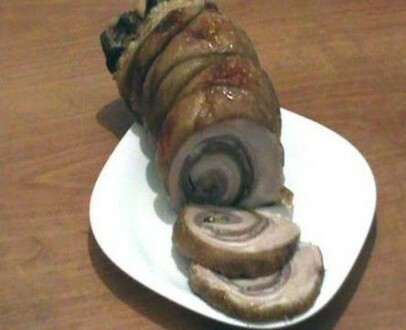
- The finished roll is cut and served at the festive Easter table.
Pouring pig
This is another traditional recipe for a dish for the Easter table. Please note that it takes a lot of time. Therefore, to prepare this dish is recommended to proceed at least 1-2 days before the holiday.
Ingredients:
- milk suckling pig( approximately 2 kg);
- 1 onion;
- 1 carrot;
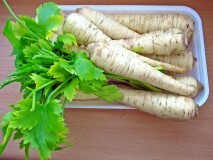 Parsley root
Parsley root 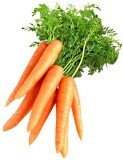 Carrots
Carrots 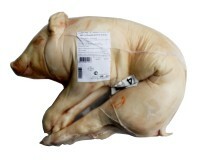 Piglet pig
Piglet pig
- 1 parsley root;
- 2 hard-boiled chicken eggs;
- 30 g of gelatin;
- pepper black peas;
- canned green peas;
- salt to taste.
Preparation:
- The carcass of a suckling pig should be thoroughly washed and chopped into pieces.
- In the pot, pour drinking clean water, then put chopped pork there, add salt and add spices.
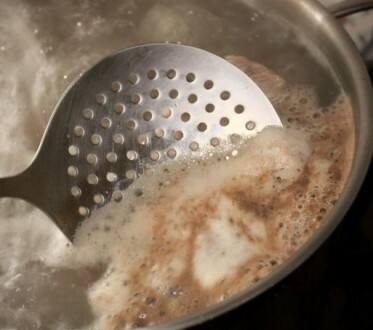
- After the water in the saucepan boils, fasten the fire, carefully remove the foam formed on the surface of the water and cook for another 30-60 minutes.
- After the specified time, remove the meat, put it on a large dish and let it cool.
- Broth filter through gauze several times. Then we prepare the fill using gelatin.
- Prepare the forms for the jellied: wash them and dry them.
- In the mold, pour the fill with a layer no higher than 1 cm. We put into it cut boiled eggs, green peas and carrots. We lay the pig's meat on top and fill it with broth so that it completely covers all the contents.
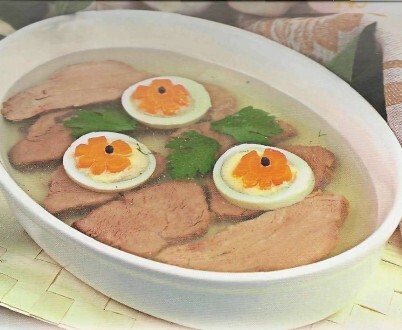
- We put the jellied in the cold, so that it stiffens.
Ginger biscuit
This is an incredibly tasty festive dish for Easter, which will please both adults and children.
Ingredients:
- 720 g of premium wheat flour;
- 250 g of granulated sugar;
- 300 g butter;
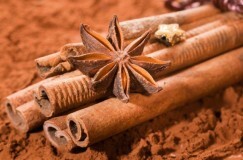 Cinnamon
Cinnamon 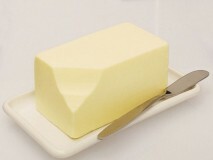 Butter cream
Butter cream 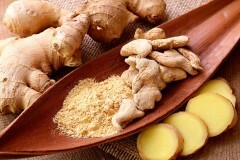 Ground ginger
Ground ginger
- 3 g ground ginger;
- 8 g of melted cinnamon;
- 2 g of ground cloves;
- 2 eggs;
- nutmeg.
Preparation:
- Place the creamy butter in the heat until it is soft. Add sugar to it and beat it into a lush, homogeneous mass.
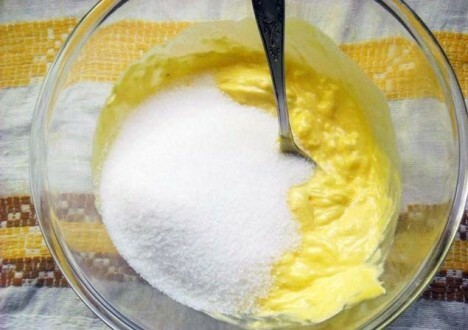
- To the oil, add crushed nutmeg, ground ginger, cinnamon and cloves. All mixed.
- Sift through a fine sieve wheat flour. Then gradually add it to the oil with aromatic spices, while stirring all the time.
- Beat the eggs and add them to the dough, which is then well kneaded.
- The finished dough is wrapped in food film and placed in the refrigerator for 8 hours.
- After this time, take the dough out of the refrigerator and let it lie at room temperature for 5 minutes.
- Roll out the dough and cut out the figures: eggs, Easter rabbit, lamb, etc.
- Bake ginger biscuits for 20 minutes at 160 ° C.

- Finished cookies can be smeared with a sweet or whipped egg whites in a thick foam.
Greek salad for the festive table
This salad is light and has a lot of vegetables and greens in its composition. Therefore, it perfectly fits to the traditional Easter table. Preparing it with ease can even beginner in the culinary arts.
Ingredients:
- 12 pcs.cherry tomatoes;
- 1 fresh cucumber;
- half of the Bulgarian pepper;
- 12 olives;
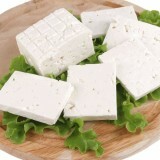 Feta
Feta 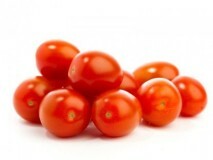 Cherry tomatoes
Cherry tomatoes 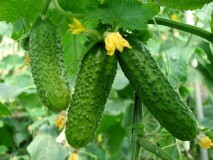 Cucumber
Cucumber
- half of onion;
- 200 g feta cheese( note that it can be successfully replaced with cheese);
- 3 tbsp.l.olive oil;
- 1 tsp.wine vinegar;
- black ground pepper, salt to taste.
- bunch of dill.
Preparation:
- Cherry cut into halves and mix with cut cucumber in large cubes.
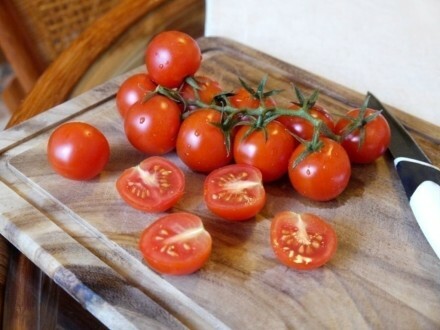
- Slice the Bulgarian pepper with straw, and onion with thin rings. Add these ingredients to the tomatoes and cucumber.
- Finely chop the well-washed greens of dill and put it in a salad.
- Cheese is cut into large cubes.
- In a separate container, combine olive oil with salt, wine vinegar and ground pepper. Pour this salad with a salad and serve the dish to the table.
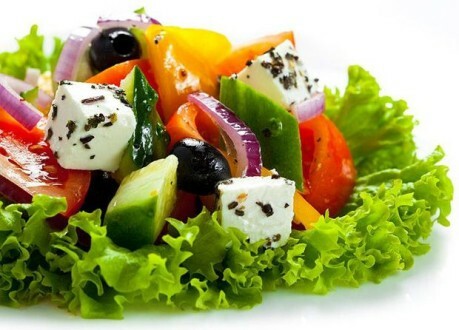
Fish roll
This is an excellent snack for a festive table for Easter.
Ingredients:
- 1 kg of fish fillet( you can take flounder);
- 500 g haliblet fillet;
- 500 g of salmon;
- 2 sprigs of celery leaves;
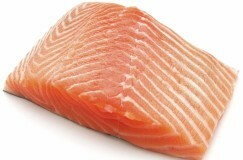 Salmon fillet
Salmon fillet 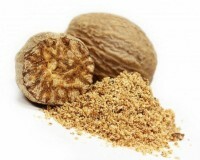 Nutmeg
Nutmeg 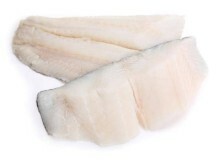 Flounder of flounder
Flounder of flounder
- 300 ml of fresh milk;
- 2 eggs;
- 500 ml thick cream;
- 4 tbsp.l.flour;
- nutmeg;
- ground black pepper;
- salt to taste;
- 90 g butter butter.
Preparation:
- We sift the flour, add salt, ground pepper and melted nutmeg to it.
- Boil the milk, then pour it into a flour with a thin trickle, stirring well.
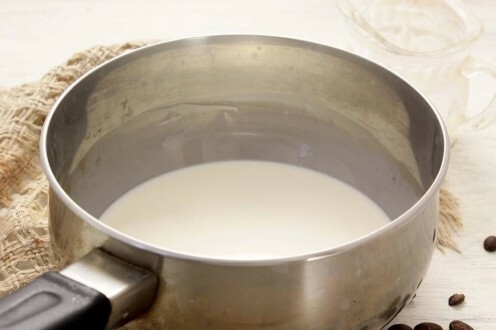
- In a water bath, melt butter and also add to the flour.
- We put the resulting mass on medium heat and, whisking it, bring it to a thickening, and then remove it from the heat and cool it.
- The fillet of my halibut, cut into small pieces, and then crushed with a meat grinder or blender. Add whipped proteins to it and mix it. The resulting fish puree is mixed with the previously prepared chilled paste.
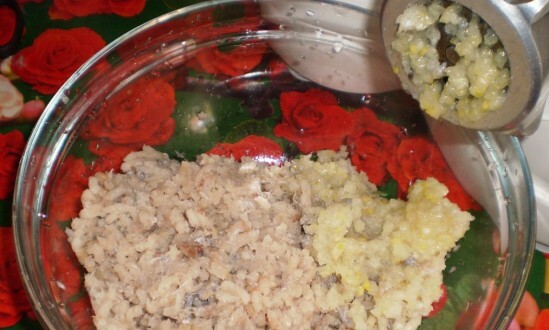
- Put the fish puree in the refrigerator. After every 20 minutes it should be stirred, while adding small portions of cream. The paste should be left in the refrigerator for about 3 hours.
- Cut the salmon fillet with long logs.
- We put on the table a sheet of food foil, from above we lay next to each other fillet of flounder. In the center we put layers of fish paste and salmon. Top with sprinkled chopped leafy celery. We wrap the fillet in a roll and in foil.
- Heat the oven to 170 ° C.We put the roll there and bake for 50 minutes.
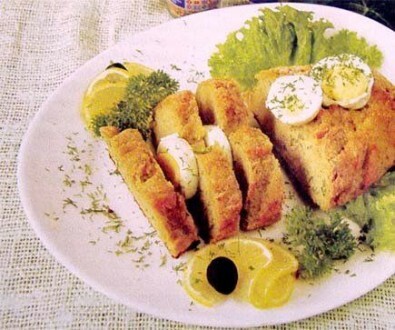
Serving of the Easter table
In addition to preparing delicious Easter dishes, you should also take care of serving the festive table itself. In the center we set Easter cakes and put a dish with painted eggs and church candles.
It is desirable to decorate the table with a composition of fresh spring flowers. You can also set the figures of Easter rabbits and rabbits. Nice and appropriate to look like a linen tablecloth, embroidered with various symbols. Embroidered napkins are desirable for it. 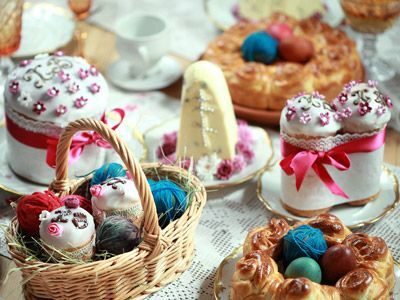
Near each plate, you can put a small souvenir, which will consist of a colorful pisanka, figures of the Easter pet and Easter.
It is advisable to prepare Easter dishes in advance, since most of them require considerable time and effort. The main dishes of the festive table are: cottage cheese Easter, Easter cake and painted eggs. The table can also be varied with light snacks, salads, fish and meat dishes.
Video on the subject:
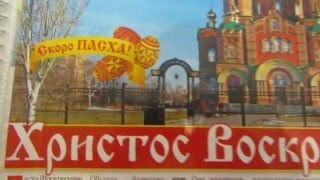 15:19
15:19 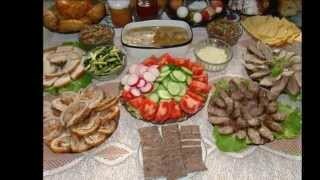 2:23
2:23 